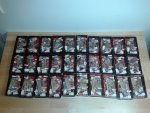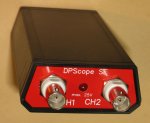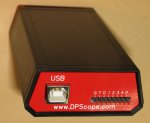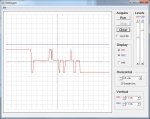inglewoodpete
Senior Member
And with the Euro in freefall...
(Actually it's not but I had to throw that in ).
).
(Actually it's not but I had to throw that in
Sonds great I'm ready to buy.At least in the beginning I will sell complete kits. I get good price breaks by ordering in bulk (and made an effort to choose good-quality components at lowest possible cost), plus as mentioned I got some components for free from John West, so I believe I'll be able to offer it for the same or less someone could buy the components themselves (not even counting the time required). I'll still put the component list and the full schematic online of course so anybody can see for himself. But I honestly think nobody can produce something that still looks and feels like a real scope & logic analyzer (e.g. wide input signal range and decent protection against overvoltage) for less than this instrument. Also when ordering there is always the tradeoff of getting everything from one vendor (but some components will be more pricey than you could get them from some other place) and pay shipping only once, or procure the components from several vendors, thus minimizing component cost but at the same time you'll have to pay shipping fees several times. For a one-off this tends to make the purchase expensive either way. For bulk orders the second solution is better because shipping cost becomes a minor part of the overall cost, reducing per-unit cost further.



Recall aeons ago I moved to Win98 for inbuilt USB support. Then Win2000 before XP.Will the program run on old Windows... how old? [95?] I've got some old laptops that might just want to live on as oscilloscopes... Thanks for your good work!
YES PLEASE Wolfgang I'm sure a "datalogger only" version would be appreciated by the community.1. What is the PC software programmed in e.g. Visual Basic, C or similar?
It is written in VB6 Professional.
2. Could the software be used / adapted to be used directly with a PicAxe as the source of data, I expect at a slower data rate?
Directly used - no. That's because the instrument must be a USB HID device. None of the Picaxes can do that, and the USB converter chip solutions typically implement CDC (virtual COM port) rather than HID. The scope functions may be a stretch as well just from the processing requirements etc., except for unusably low sample rates; but the datalogger mode per se should be perfectly doable on a Picaxe, it does not require a lot of computing power on the Picaxe side.
A better bet may be the software of the original DPScope, since this uses a virtual COM port (although I'd need to reduce the data rate from the current 500 kbaud to e.g. 19200 baud). On my website you find a "manual connect" version (i.e. does not expect a specific USB VID/PID for the instrument), you can use that with any device (must support 500 kbaud) on any COM port. The DPScope user manual (second half of it) has all the command descriptions, you will only need a subset though.
3. Is the PC source code available?
No, not at the moment. If there is enough demand I could cut a "datalogger only" version for the Picaxe crowd - if others are interested please let me know.
Late Christmas.YES PLEASE Wolfgang I'm sure a "datalogger only" version would be appreciated by the community.
Regards

